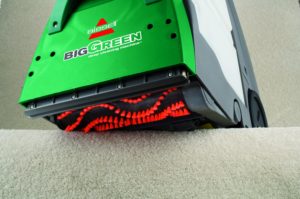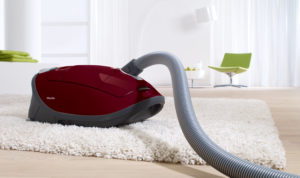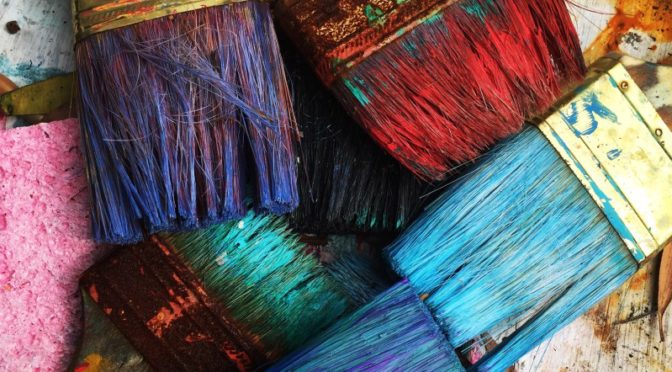
Once you start shopping for a new carpet or area rug, you’re going to come across a lot of carpet-specific vocabulary. Some terms (e.g., face weight) aren’t going to be that important. Others (e.g., fiber twist), can have a significant effect on quality and longevity. Today we’re going to look at one of the more important terms: solution-dyed. You can probably guess it has to do with a technique for dyeing carpet fibers, but unless you’ve spent some time in the industry or done your research, you’re not necessarily going to know what it means or why it’s important. The truth is that there’s a rather large difference between carpet fibers traditionally-dyed and those solution-dyed. We’re going to tease apart that difference and why it matters.
What is solution dyeing and can it be used on both synthetic and natural fibers?
Solution-dyeing is one of two main ways to add coloration to carpet fiber. It’s used exclusively with synthetic fibers like nylon, polyester, triexta, and olefin. There are a range of techniques used in the carpet industry to dye fibers, but solution dyeing is different enough from all other methods to essentially reduce every non-solution-dyed method into one category: traditional dyeing.
It’s important to note that solution dyeing is only possible with synthetic fibers; natural fibers (e.g., wool) can’t be dyed this way because solution dyeing requires the coloration to be added while fibers are in production. Since natural fibers come “pre-made” from wherever they’re harvested (e.g., from sheep with wool), they can only be dyed through traditional methods. Now let’s take a look at what those methods are and how they differ from solution dyeing.
How does solution dyeing differ from traditional ways of adding color to carpets?
Traditionally, carpet fibers are dyed by adding colors, or dyes, to fibers once they have already been produced. The fiber itself is first made without strong colors; it’s often referred to as a greige good, as its natural color resembles a blend of beige and gray. Once produced, whether by hand or in a factory, the fibers will then be lowered into a vat of dye to add color. On a molecular level, the dye occupies some unfilled dye sites in the carpet fibers, predominantly shifting the fibers to a desired color. Incidentally, when this occurs with undesired colors, we call it staining.
In solution dyeing, in contrast, dyes are added to the fibers before they’re even fully formed, while they’re still in a liquefied state. This is possible because synthetic fibers are essentially petroleum (oil)-based polymers, or chains of chemicals. Through carpet-making machines, the liquid pre-fibers are pushed at high pressure through spinnerettes to create a yarn once they dry. During this process, the color pigments are mixed with the liquefied fibers as they are produced.
As a result, once the fibers come out of the spinnerettes, they have already acquired the pre-chosen colors. On a molecular level, the unfilled dye sites in the fiber are filled, or bonded, making it next to impossible to add new colors to the fiber. It’s the difference between adding oil to an egg after frying it (traditional dyeing) and frying the egg directly in oil (solution dyeing). The second method “bakes” the oil into the egg.
Why is solution dyeing important for carpets?
Solution-dyed fibers have a number of advantages over traditionally-dyed fibers, including being far more colorfast, or impervious to fading or bleeding colors, as well as far higher levels of stain resistance. Both of these advantages occur due to the manufacturing process where the colors are made an integral part of the carpet fiber.
Even though traditionally-dyed carpets and solution-dyed carpets look alike to the naked eye, the empty dye sites in fibers that have been dyed after production allow spills to penetrate the fibers and occupy those sites, resulting in staining. It’s like the difference between an apple and a pumpkin. An apple is like a traditionally-dyed fiber; it may appear red or green or yellow externally but will be a greenish-white beneath the surface. A pumpkin, in contrast, is orange on the outside and inside, much like a solution-dyed fiber.
Because solution-dyed carpets have their colors bound to fibers at a molecular level, they work well in areas that will receive a lot of light, such as in laboratories, medical settings, by large windows with natural light exposure, and outdoors. The fibers also receive ultraviolet inhibitor stabilization during production, which makes them even better choices for outdoor carpeting. Many commercial carpets will also feature solution-dyed fibers for these reasons.
Are there any cons or disadvantages to solution dyeing carpet fibers?
The main disadvantages with choosing solution-dyed fiber carpets are that you typically have fewer colors to choose from and that you might have a longer wait time for your carpet to be produced compared to traditionally-dyed carpets. Neither of these differences affect durability or quality; they’re more things to be aware of during the choosing and ordering process.
Which carpet cleaners and vacuums would you recommend for carpets and rugs by either dye method?

Even though solution-dyeing makes carpets and rugs more resistant to staining, you’re still going to want to remove spills and stains as quickly as possible to reduce the odds of their becoming a permanent part of your carpeting. For carpet cleaners, we always turn to the Bissell 86T3 Big Green. It’s proven itself repeatedly in our books (e.g., here and here) as a machine with equal strength in residential and industrial applications, and frankly, we can’t think of a better carpet cleaner for under $1,000.

When it comes to vacuuming, we recommend machines capable of cleaning all of your carpets, rugs, and bare floors in a single unit without unnecessary switching of cleaning heads or clunky accessories. In our books, two of the best example of buy-it-for-life, clean-anything vacuums are the Miele Complete C3 Soft Carpet and the Miele Compact C2 Electro+. Both are capable of cleaning any residential or commercial style of carpet in any pile height, and are quality machines you’ll likely be able to pass on to your children. The Soft Carpet is more expensive and has a wider cleaning capacity while the Electro+ is a bit cheaper, a bit smaller, and almost as effective.
![]() You can buy the Bissell 85T3 Big Green carpet cleaner here on Amazon. You can buy the Miele Complete C3 Soft Carpet here or buy the Miele Compact C2 Electro+ here.
You can buy the Bissell 85T3 Big Green carpet cleaner here on Amazon. You can buy the Miele Complete C3 Soft Carpet here or buy the Miele Compact C2 Electro+ here.
![]() Canadians can buy the Miele Soft Carpet here, the Compact Electro+ here, and the Bissell Big Green here.
Canadians can buy the Miele Soft Carpet here, the Compact Electro+ here, and the Bissell Big Green here.
 If you find our research on PMC helpful, you can follow our efforts to keep maniacally reviewing home cleaning tools by shopping through our links above. We promise to keep fighting the good fight against every horror children, animals, and grown, yet messy humans can inflict upon a clean home.
If you find our research on PMC helpful, you can follow our efforts to keep maniacally reviewing home cleaning tools by shopping through our links above. We promise to keep fighting the good fight against every horror children, animals, and grown, yet messy humans can inflict upon a clean home.

